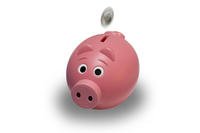Washington is turning its watchful eye towards target-date retirement funds. We have long been fans of these mutual funds, and consider them effective ways for individuals to answer the question: "What should I invest in?" What's more, there are more mutual funds to chose from than publicly traded stocks, (we kid you not!) and deciding what fund to invest in is no small endeavor. Enter, the beauty and simplicity of the target-date retirement fund.
A target-date retirement fund is the financial version of the chicken rotisserie chicken, meaning you can "set it and forget it." These mutual funds tend to have rather bland names such as "Target Date 2015" or "Target Date 2035." However, in this case, boring is beautiful.
The numbers in the names correspond to the year closest to you're retirment age, such as 65. As you get closer to retirement, a target-date retirement fund will gradually shift its asset allocation (that's fancy speak for your mix of stocks, bonds, and cash) to be appropriate to your age and stage in life. As such, these mutual funds take the emotion out of investing and help you save yourself from yourself. At least, that's how it's supposed to work.
In reality, it turned out that mutual fund companies had wildly varying views on what an "ideal" portfolio should look like for someone who is turning 65 in 2010. In better economic times, these varying definitions didn't matter so much. But after the carnage of the flailing market in 2007-2009 , many a retiree has found themselves looking at their target-date fund with more shock than awe. So regulators are now trying to decide how much of a target-date fund should be in stocks.
This is a great question to focus on. Studies show that over time what really drives a portfolio's return is not whether you're smart enough to pick the next Microsoft or Google, but whether or not you had the appropriate asset allocation -- such as stocks, bonds, and cash, etc. But how do you know what's the right mix for your retirement assets?
Up until age 50, we feel you have enough time on your side to have as much in stocks as you feel comfortable with in your retirement account. After age 50, we are big fans of Vanguard founder John Bogle and his rule of thumb. He says that the percent of your portfolio that should be in bonds is equivalent to your age. So if you, like him, are approaching 80 years of age-- you should have 80 percent of your portfolio in bonds.
Another way to say this is that the maximum percent of your portfolio that should be in stocks is 100 minus your age (so if you are 80 years old, 100 minus 80 equals 20, and thus 20 percent is the maximum amount to have in stocks). We think this rule of thumb can work even better if you tweak it for gender. That's because women statistically live an average of seven years longer than men. So if you're male, the maximum percent of your portfolio that is in stocks is 100 minus your age. And if you're a woman, that equation shifts to 110 minus your age. Of course, this is just a rough guideline, as with all financial advice it must be tailored to your personal situation and risk tolerance.
It will be interesting to see what guidelines (if any) are ultimately put out. But you can always use this rule of thumb on your own to make sure your portfolio hits the mark.
If you have questions about your retirement funds and how much you should be saving, visit Military.com's Finance channel.






